Rude Hand Gestures: 10 Offensive Signs Around The World
If you're planning on traveling and visiting new countries, you need to make sure you're not inadvertently offending people.
You may think that because you don't speak the local language, you can use hand gestures to get your point across.
While this can be true, using certain – seemingly innocent – hand gestures can be considered extremely offensive in another culture.
In today's article, I've compiled a list of 10 rude hand gestures you need to avoid at all costs (unless you enjoy visiting hospital emergency rooms!).
In this article, you'll find:
Let's get started…
Rude Hand Gestures #1 The A-OK
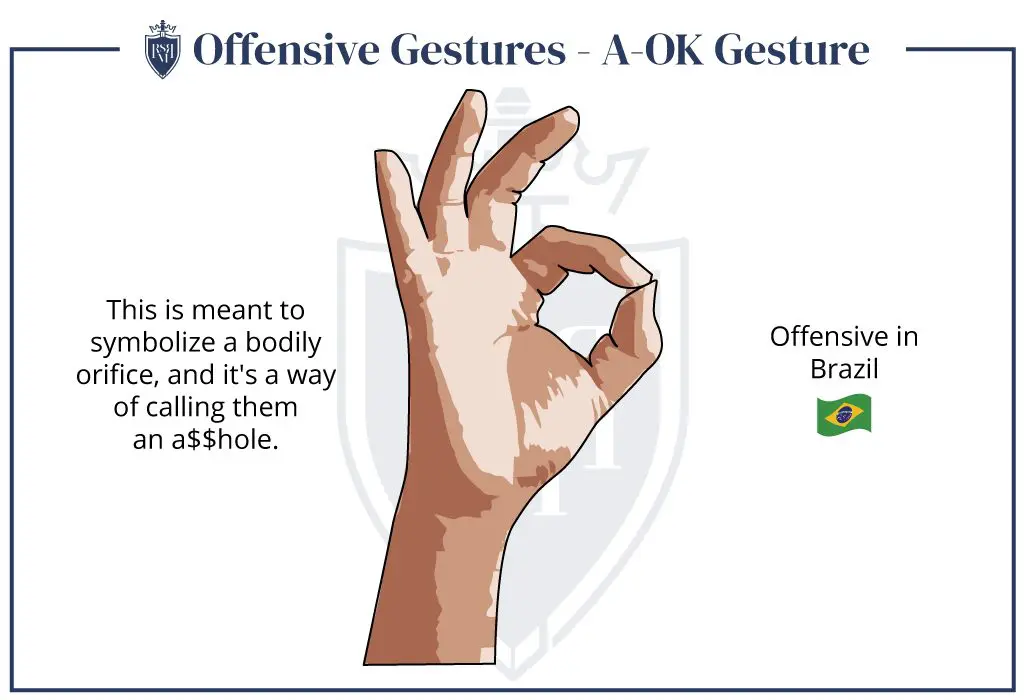
For Americans like me, the A-Ok used to be a positive gesture which meant…ok!
In Brazil, it means anything but. It symbolizes a bodily orifice – the a-hole. It's an insult that could get you in trouble if you're visiting.
Now, why did I say this used to be positive for Americans?
It started garnering some enmity for us ever since a 4chan thread started spreading a rumor that it symbolizes white supremacy. The joke caught on and bad groups started using it unironically.
Want to play it safe? Don't use it at all.
Rude Hand Gestures #2 The Moutza
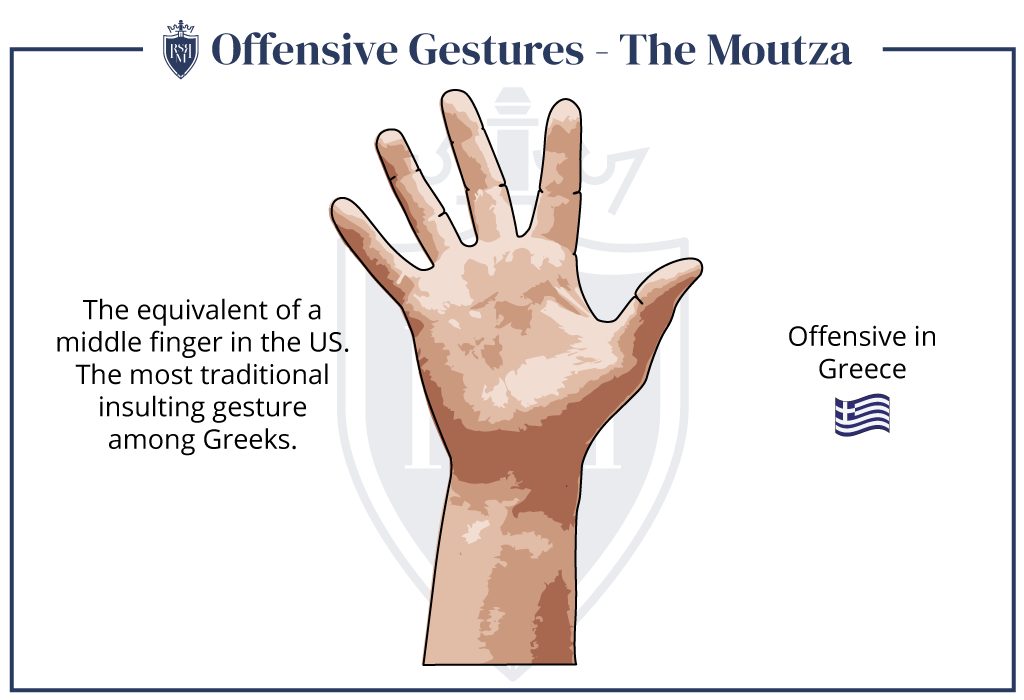
This rude hand gesture is so widespread in Greece, that the government even considered banning it.
It resembles a ‘talk to the hand' gesture in that it's simply an open palm extended toward the receiver. To make it doubly offensive, a person can smack one palm against the back of another and extend both hands.
It originates from the Byzantine Empire when criminals were hauled across town on donkeys to be humiliated. Citizens would collect cinders and smear them across the wrongdoer's face to amplify their shame.
The Greek word for cinder happens to be moutzos – hence the name.
REAL MEN REAL STYLE VIDEOS
Rude Hand Gestures #3 Inward-Facing Peace Sign, AKA ‘The Forks'
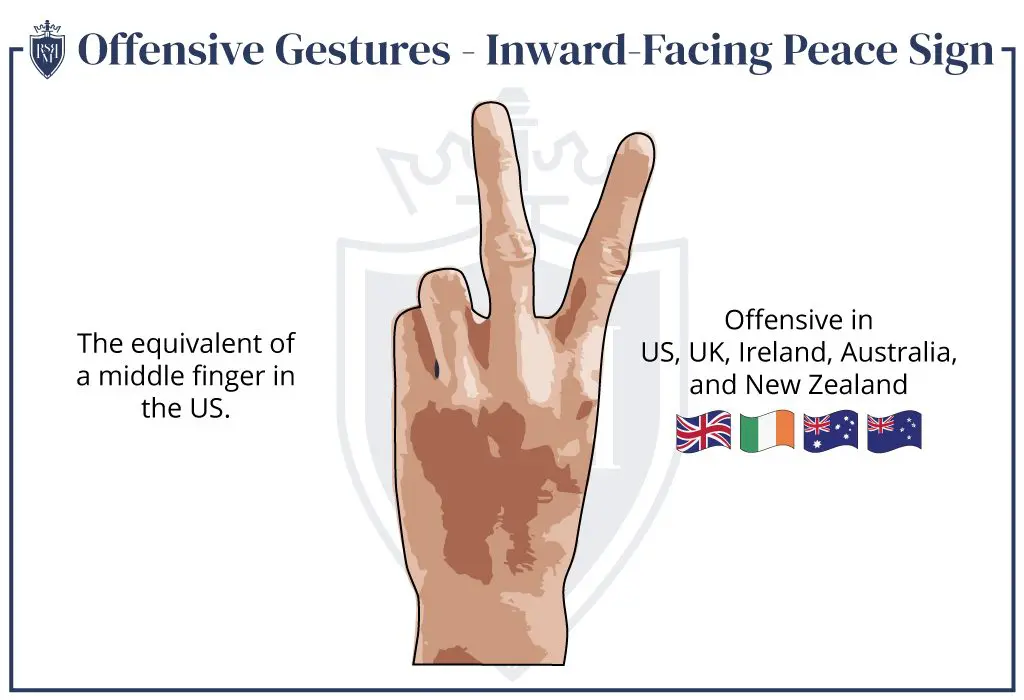
If you happen to be traveling to the UK or the Commonwealth and order two beers, be very careful to which side of your hand is facing the bartender.
It's the equivalent of an American middle finger.
#4 The Fig Sign, or Mano Fico
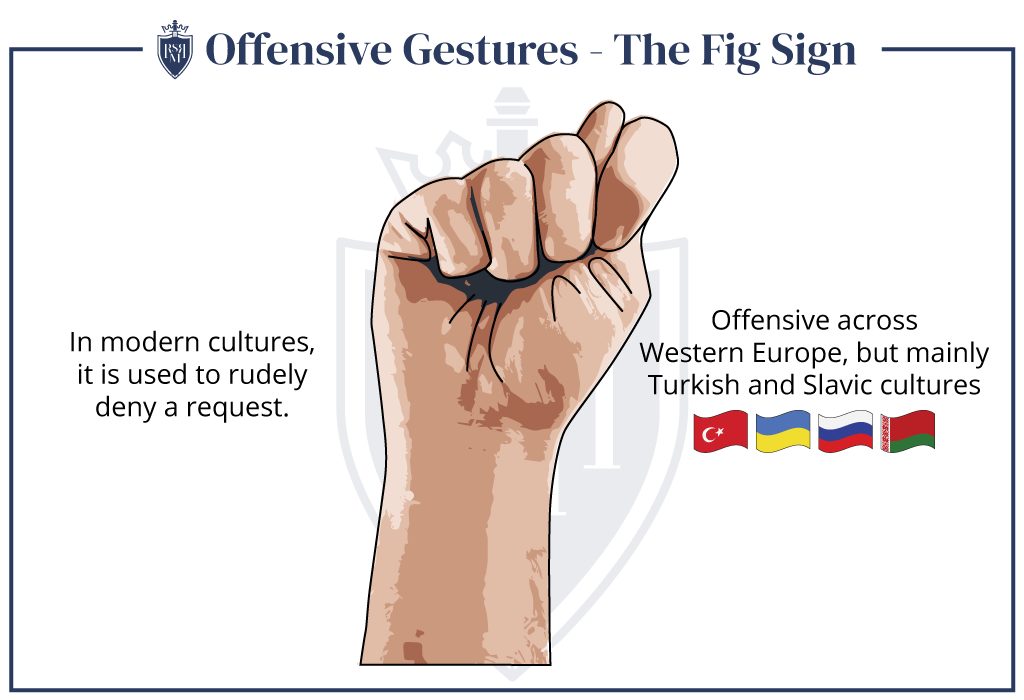
In several former territories of the Roman Empire and in Slavic cultures, the Mano Fico is meant to resemble a woman's private parts.
In antiquity, the Roman Paterfamilias (head of the family) would make this sign during the Lemuria Festival to fend off evil spirits. The fig was also associated strongly with fertility, which explains the link.
Nowadays, it's a way to rudely deny a request.
#5 The Corna
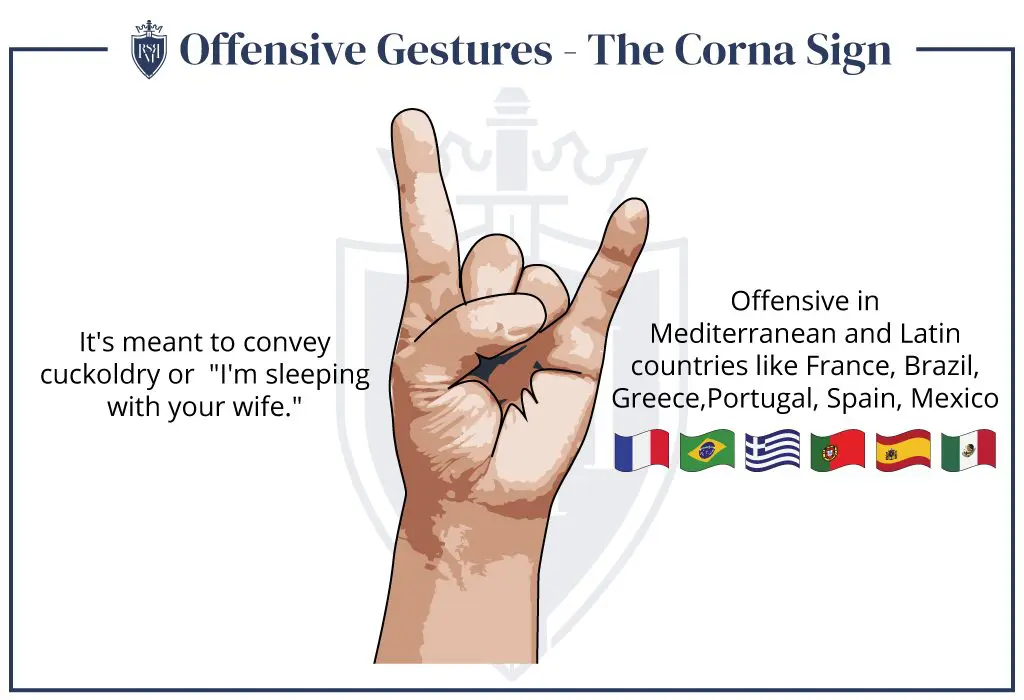
Americans use it to rock out in concerts, but elsewhere this sign is a dangerous insult that I think goes to show the importance of body language.
Similarly to the Fico, the Corna is a rude hand gesture in former Roman territories – Mediterranean countries such as France, Greece, and Spain. It's also met with disdain in Mexico, Portugal, and Brazil.
It comes from the Latin word for horns and conveys cuckoldry. It tells another man you're sleeping with their wife.
#6 The Dog Call
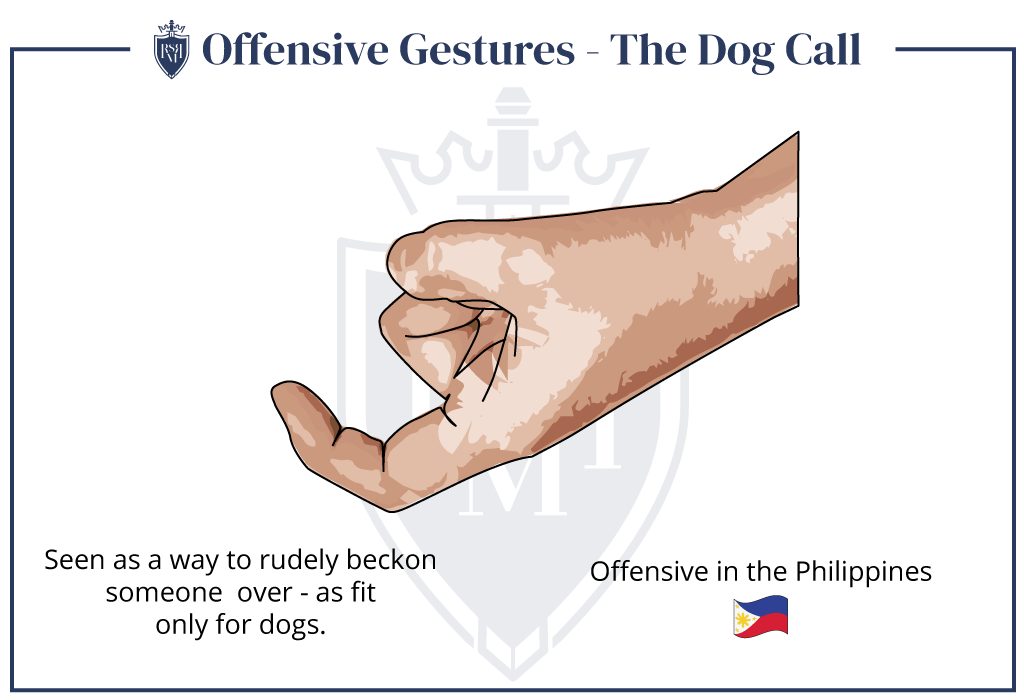
In the Philippines, this rude hand gesture is so bad that it could get you arrested.
By beckoning someone over this way you're essentially saying that they're no better than a dog.
#7 Crossing Your Fingers
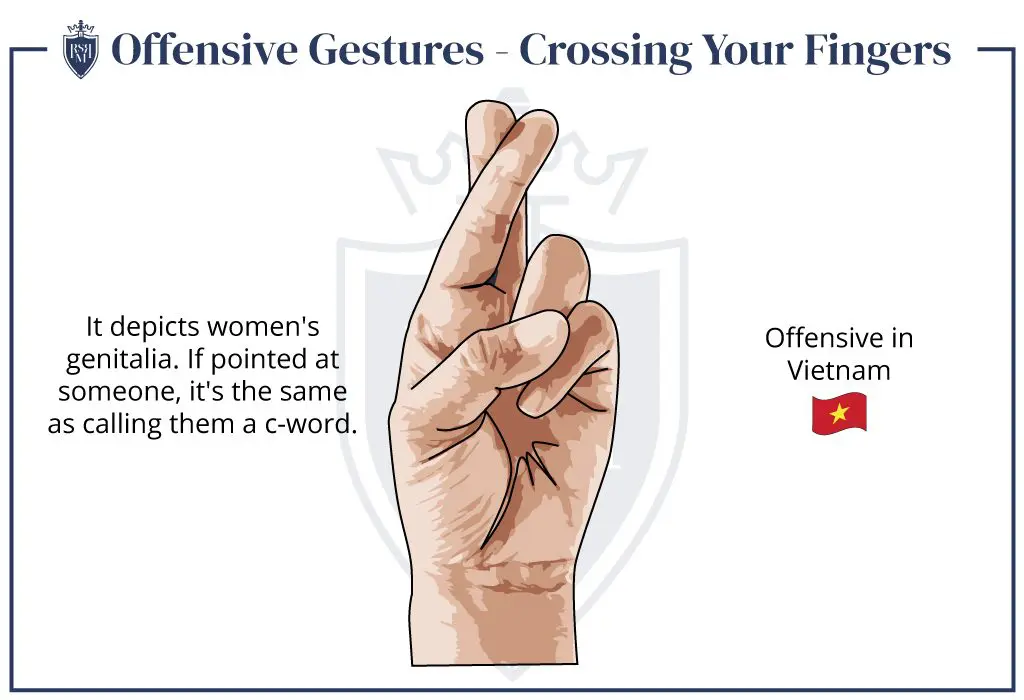
In the United States, crossing one's fingers is a positive sign. It means that you're wishing luck upon yourself or another.
In Vietnam, it's best avoided…
#8 The Five Fathers
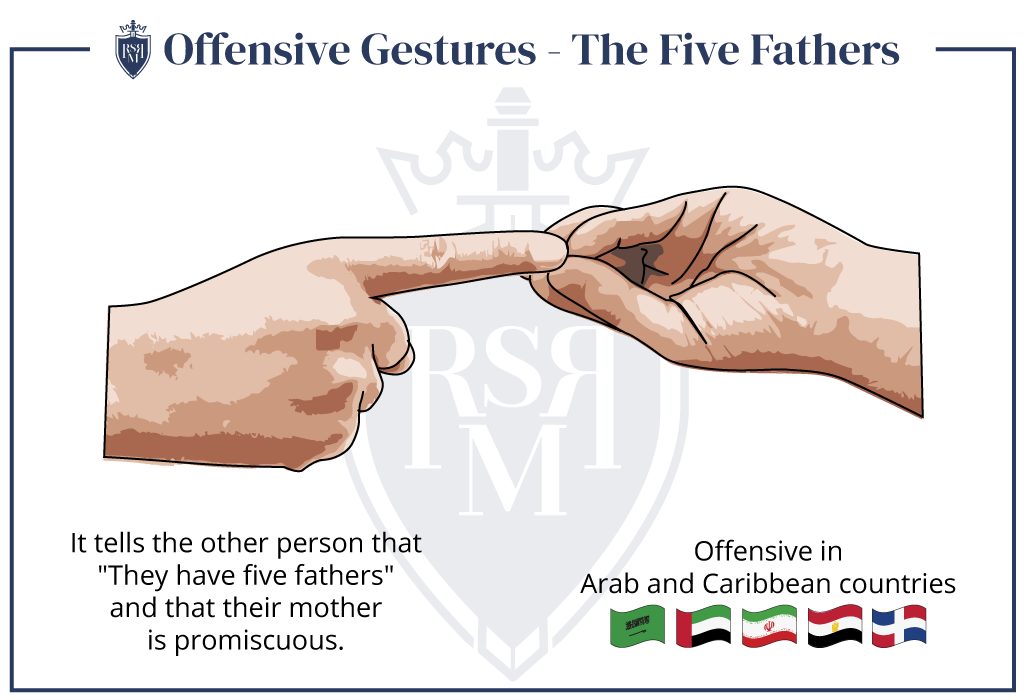
By pointing your index finger into the five fingers on your other hand, you are implying that the other person has five fathers.
In other words, the hand gesture meaning is their mother is promiscuous.
It's considered a rude hand gesture in Arabic countries and some Caribbean nations.
#9 The Cutis
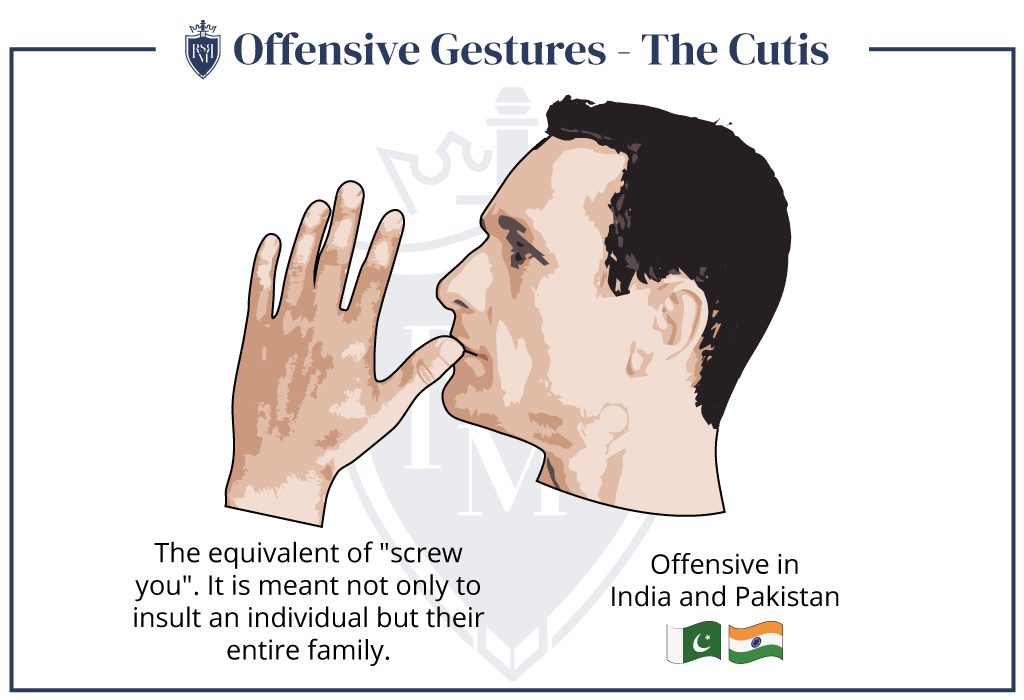
This is done by placing the tip of your thumb in your mouth while the rest of your fingers are pointed upward. Then, you flick your thumb forward.
In India and Pakistan, this is used as a rough equivalent to ‘screw you', except that it's slightly worse. Not only is it meant for one person, but their whole family.
#10 El Tacaño
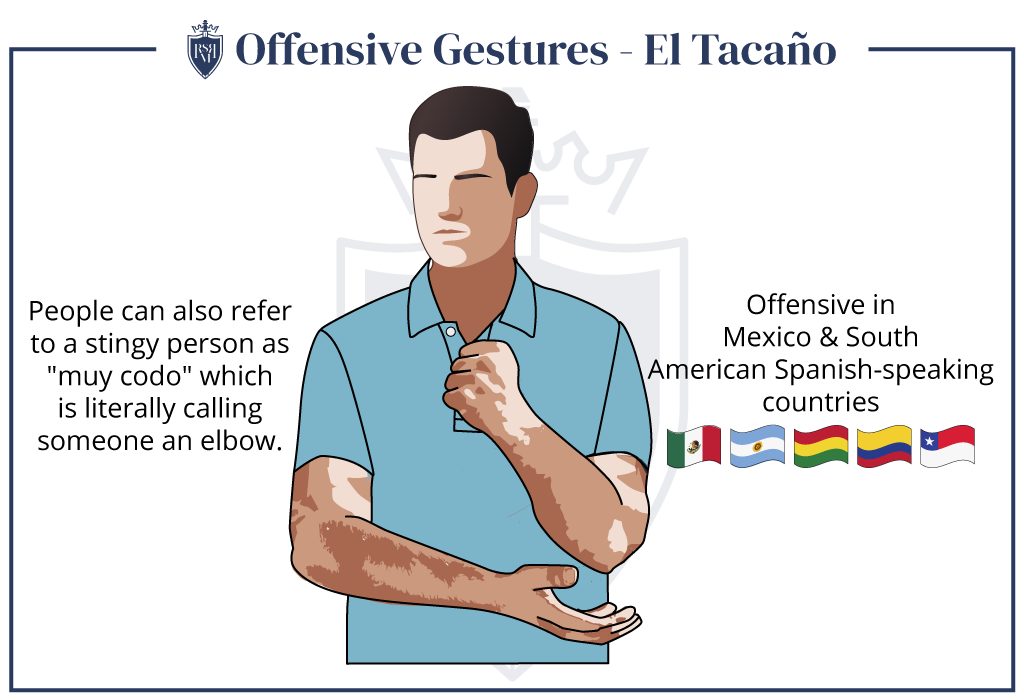
‘Tacaño' literally translates to ‘cheapskate' in Spanish. When people in Mexico and South America want to refer to someone as such, they will point their forearm up and rub the bottom of their elbow – el codo.
It's no surprise, then, when stingy individuals are often referred to as ‘muy codo‘.
Summary – Rude Hand Gestures
Though some gestures are rather specific and easy to avoid, others are just as easy to miss. Pay attention to your hands when you travel, and you might just save yourself a world of embarrassment.
Want to learn more? Discover other related articles:
- Negative Body Language – Communication Mistakes & How To Fix Them
- Nonverbal Communication and Honesty | Can Body Language Communicate Honesty?
Click below to watch the video – 10 Obscene Hand Gestures (You Might Use By Accident!)






